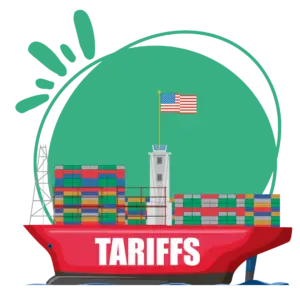If you’re looking for a simple and effective way to start investing, ETFs (Exchange-Traded Funds) are one of the best options available. Whether you’ve been keeping your money in a savings account or a fixed deposit, you may have realised that those options don’t offer much growth.
Learning how to invest in ETFs can help you put your money to work, build long-term wealth, and take advantage of the stock market without the complexity of picking individual stocks. Even if you’re new to investing, this article will walk you through everything you need to know to get started investing in ETFs successfully.
What are ETFs, and why should you care?
An ETF (Exchange-Traded Fund) is like a basket of investments (stocks, bonds, or other assets) that you can buy and sell on the stock market, just like a regular stock. Instead of picking individual stocks like Microsoft or Apple, an ETF lets you own a little bit of everything in a single purchase.
Why ETFs are perfect for beginners
✅ Diversification – You’re not putting all your eggs in one basket. If one company does poorly, others in the ETF can balance it out.
✅ Lower costs – Many ETFs have low fees, unlike mutual funds that often charge high management fees.
✅ Easy to buy & sell – ETFs trade on stock exchanges, so you can buy or sell them anytime the market is open.
✅ Great for passive investing – You don’t need to constantly check your portfolio. Just set it and let it grow.
Real-life example
Imagine you want to invest in tech stocks but don’t know which ones will perform well. Instead of buying just Apple, you can invest in a Tech ETF (like the Invesco QQQ ETF), which holds shares in Apple, Microsoft, Amazon, Google, and more.
Understanding how to invest in ETFs like these helps you gain exposure to different industries without the need to pick individual stocks.
Where to start investing in ETFs
To buy ETFs, you need a brokerage account. Some great platforms include:
🔹 eToro – Great for beginners who want to invest in stocks, ETFs, and even cryptocurrencies with zero commission fees. eToro also offers a copy trading feature, allowing you to automatically mirror the trades of successful investors. eToro is available in numerous countries, including the UK, Australia, and many European nations. However, it’s not accessible in certain regions like the USA. Here’s a full list of countries where eToro is supported.
🔹 StashAway – A robo-advisory platform that automatically invests your money in a diversified portfolio based on your risk level. Ideal for beginners who want a hands-off, long-term investing approach. StashAway is available for Singapore, Malaysia, Hong Kong, Thailand, and the UAE customers.
Once you have an account, you can search for ETFs by their ticker symbols (e.g., VOO for an S&P 500 ETF) and start investing.
Best practices for how to invest in ETFs successfully
Investing in ETFs is easy, but doing it smartly is key. Follow these best practices to maximise your returns:
1. Choose the right ETF type for your goals
Different ETFs serve different purposes. Here are some to consider:
Broad Market ETFs (Great for beginners) – Track large stock indexes like the S&P 500 (VOO, SPY) or the Total US Market (VTI).
Thematic ETFs (For those interested in trends) – Focus on specific industries like Tech (QQQ), Clean Energy (ICLN), or Healthcare (XLV).
Dividend ETFs (For passive income) – ETFs like VYM and SCHD focus on dividend-paying companies.
2. Invest consistently with dollar-cost averaging (DCA)
Instead of trying to time the market, invest a fixed amount every month. This strategy, called dollar-cost averaging (DCA), helps smooth out market fluctuations and reduces the risk of buying at the wrong time.
If you’re just learning how to invest in ETFs, DCA is a great way to ease into investing without worrying about market volatility.
3. Keep costs low (watch out for expense ratios)
All ETFs charge a small fee known as the expense ratio. While it may seem minor, it adds up over time. Look for ETFs with expense ratios below 0.20% to maximize your returns.
Understanding how fees impact your returns is a key part of mastering how to invest in ETFs wisely.
4. Reinvest dividends for maximum growth
Some ETFs pay out dividends. Instead of withdrawing that money, reinvest it to benefit from compounding growth. Most brokerages offer automatic dividend reinvestment plans (DRIPs).
5. Diversify your ETF portfolio
Even though ETFs are diversified, it’s a good idea to hold a mix of ETFs across different markets. For example:
✅ A US stock market ETF (VOO)
✅ An international ETF (VXUS or IWDA)
✅ A bond ETF (BND) for stability
✅ A thematic ETF (like QQQ) for growth exposure
Building a well-balanced portfolio is essential when learning how to invest in ETFs.
6. Stay invested and avoid emotional trading
Market dips are normal. The worst mistake you can make is panic-selling when prices drop. Instead, stick to your investment plan and keep buying consistently.
🔹 Example: If you had invested $10,000 in the S&P 500 ETF (SPY) in 2008 during the financial crisis and held it, your investment would be worth $50,000+ today despite the crash.
10 most popular ETFs and their performance
If you’re wondering which ETFs are worth considering, here are 10 of the most popular ones along with their 10-year average annual returns (as of 16 Feb 2025):
SPDR S&P 500 ETF (SPY) – ~12.5% p.a. | Tracks the S&P 500, offering exposure to the top 500 U.S. companies.
Vanguard Total Stock Market ETF (VTI) – ~12.3% p.a. | Covers the entire U.S. stock market, including small-, mid-, and large-cap stocks.
Invesco QQQ ETF (QQQ) – ~16.0% p.a. | Focuses on the Nasdaq-100, which includes top tech giants like Apple and Microsoft.
Vanguard FTSE Developed Markets ETF (VEA) – ~7.5% p.a. | Provides exposure to developed markets outside the U.S., including Europe and Japan.
iShares MSCI Emerging Markets ETF (EEM) – ~5.2% p.a. | Invests in companies from emerging markets like China, India, and Brazil.
Vanguard Dividend Appreciation ETF (VIG) – ~10.5% p.a. | Focuses on U.S. companies with strong dividend growth histories.
iShares Russell 2000 ETF (IWM) – ~10.1% p.a. | Targets small-cap U.S. stocks, offering higher growth potential but more volatility.
Vanguard Real Estate ETF (VNQ) – ~8.3% p.a. | Invests in U.S. real estate investment trusts (REITs) for income and diversification.
ARK Innovation ETF (ARKK) – ~13.5% p.a. | A high-growth ETF focusing on disruptive technologies like AI and biotech.
iShares 20+ Year Treasury Bond ETF (TLT) – ~4.8% p.a. | A bond ETF offering exposure to long-term U.S. Treasury bonds for stability.
These ETFs cater to different investment strategies, whether you want broad market exposure, sector-specific focus, or income-generating assets. Always research their expense ratios, historical performance, and risk levels before investing.
Final thoughts: start small, stay consistent
Investing in ETFs is one of the simplest ways to build wealth. You don’t need to be a stock market expert – you just need patience and consistency.
🚀 Ready to start?
-
Open a brokerage account on eToro or StashAway
-
Pick a beginner-friendly ETF like VOO, IWDA, or QQQ
-
Invest regularly and let time grow your wealth
Now that you know how to invest in ETFs, start building your long-term wealth. The best time to start investing was 10 years ago.
The second-best time? Today. 🚀




